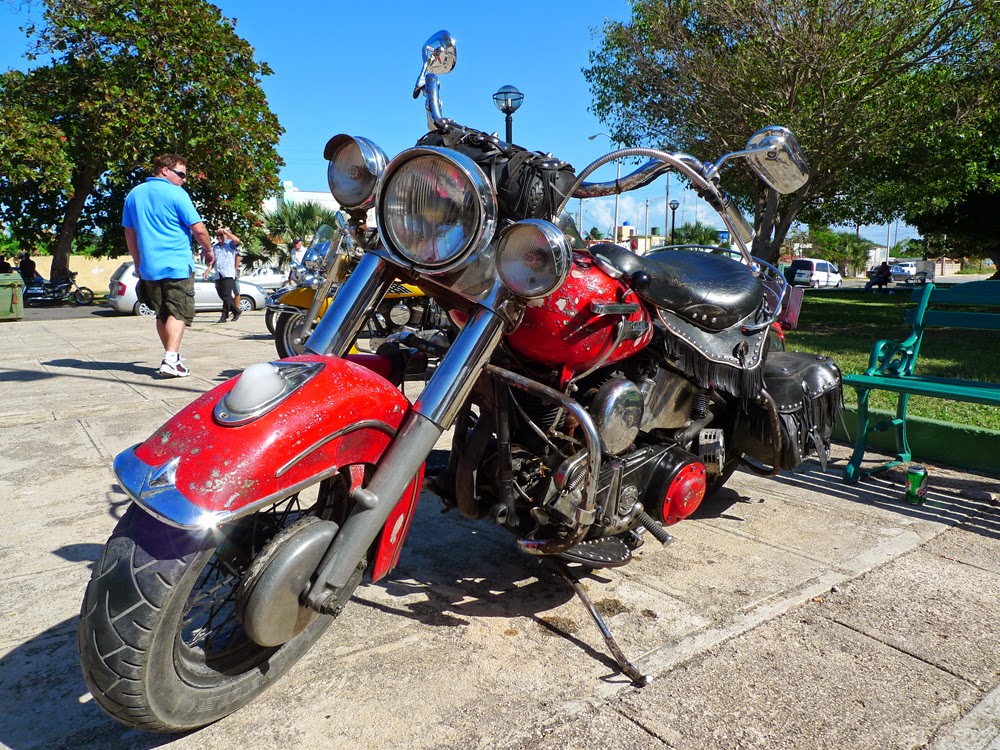 |
| Late 1940s flathead, on display at Harlistas rally in Varadero. |
"Patina" gets mentioned a lot these days. In its broadest sense, it's the visual evidence – faded and peeling paint, blossoming rust – of the effects of the environment on a surface over time.
Many who love old stuff – cars, motorcycles, furniture – treasure patina, and not just because it separates the reproduction from the authentic. With its unique patterns and textures, patina can turn the mass-produced item into something individual, a piece with its own story to be pondered even as that story continues to evolve.Plus, patina is free. Not every classic vehicle owner can spend thousand on that perfect (for a day) paint job, but all can elect the default: just let it rust in place. It's probably fair to say that cost was a larger factor than aesthetics in the rat rod movement that surfaced in the early 1990s.
Of course, not all patina is honest patina. Just as unscrupulous dealers have long "antiqued" dressers and chairs by beating them with chains and dipping them in solvents, so too do some owners subject their vehicles to acid baths and other indignities to try to replicate overnight the testimony of decades of sun and rain, heat and cold.
When I first noticed this pockmarked Harley-Davidson, I wondered if had been "antiqued." But after studying its many scars and rust bubbles, its cracked leather and tarnished brightwork, I decided that here was a genuine survivor.
Also, when I thought about it – what Cuban could ever desire to to make something look old?
 |
| Scarred or not, this survivor had its admirers. |